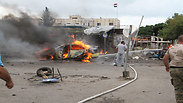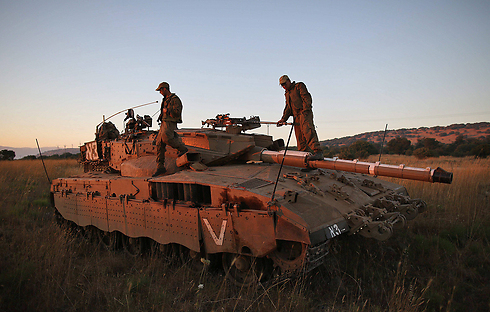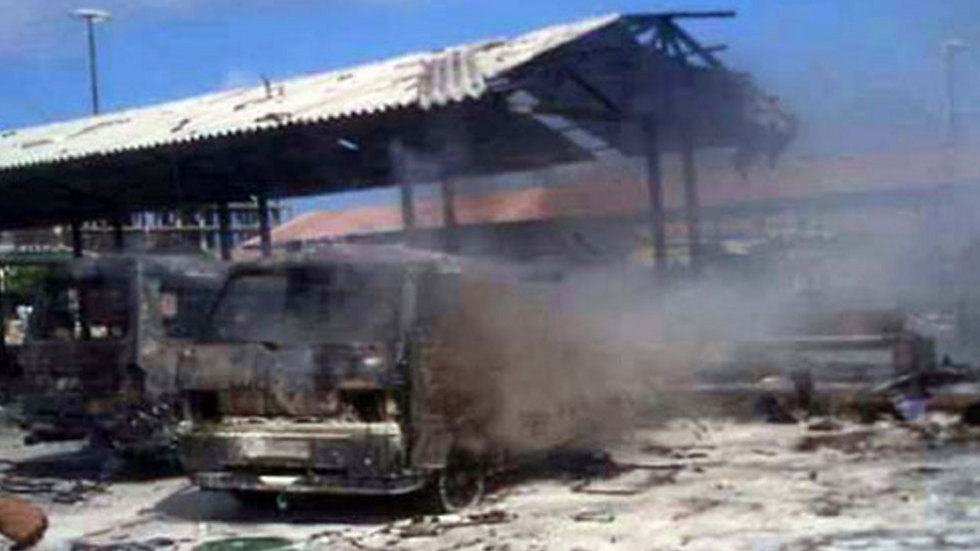
The Syrian Liaison Unit
To better aid Syrian civilians on the border, Israel has created a new unit designed to maintain a relationship between those civilians and the Jewish state; Unit is based on Lebanese Liaison Unit framework
Therefore, the IDF has expanded and created units in the Northern Command which deal specifically with maintaining contact with local residents on the Syrian side of the border. The Liaison to Residents of the Syrian Golan unit was founded by the Northern Command under this framework.
The new unit will coordinate humanitarian assistance to people in the area and transfers of wounded civilians from Syria to Israeli hospitals. Over 2,000 injured Syrians have been treated in Israeli hospitals since the outbreak of the Syrian Civil War. Besides logistics personnel, the unit is also comprised of medical professionals, humanitarian workers, and civilian officials.
This isn't a new idea and was done before – this was how the IDF built a relationship with the residents of southern Lebanon in 1976. What started as humanitarian aid shipments through the "good fence" on the Lebanese border eventually became regular contact under the IDF Lebanon Liaison Unit's framework.
By the time Israel withdrew from south Lebanon in 2000, the unit had already grown into a full division under the command of a brigadier general who also commanded forces from the South Lebanese Army (SLA), and was responsible for the wellbeing of the local residents in the area.
Despite the civil war raging in Syria, the contacts which Israel has made and maintained on the Syrian side of the border have enabled the border region to remain quiet. A factor in preventing the spillover of fighting into Israel has been the humanitarian aid which Israel has been providing to the residents of the area, including residents of Quneitra, the largest city on the Syrian side of the border.
It has become clear that the moderate rebels, including those from the Free Syrian Army (FSA), have benefitted from Israeli humanitarian assistance. There is further evidence to suggest that these groups sometimes collaborate with Islamist groups such as Jabhat a-Nusra. Despite the fact that Israel denies any connection to Jabhat a-Nusra, it seems that aid still reaches them, and has kept the al-Qaida affiliated group from launching attacks against Israel.
The principal actors against Israel in the Golan Heights are Hezbollah and the Iranians, who seem to be acting without the knowledge of the authorities in Damascus. However, the Syrian group which poses the most danger to Israel is ISIS affiliated Liwa Shuhada al-Yarmouk, comprised primarily of Syrians from villages in the southern Golan on the Syrian side, and who have threatened to attack Israel with chemical weapons in the past.
A high ranking IDF official said that Israel has no intention of creating a similar framework to what it had in Lebanon in the 1970's and 1980's. Never-the-less, as has happened in the past, sometimes the reality on the ground determines how deeply involved Israel gets. South Lebanon began as a humanitarian mission, and quickly devolved into military assistance. It began with secret training of a few units and small scale weapons transfers, and eventually became overt involvement, with heavy weaponry being given to the SLA, and thousands of SLA fighters being trained in Israel. There is no mechanism keeping this from happening again in the Golan.












